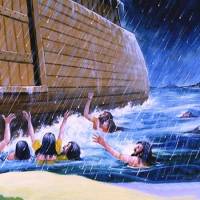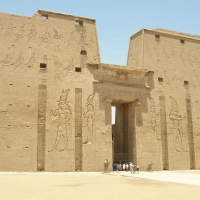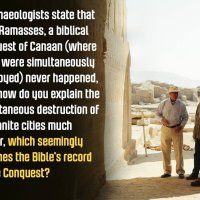Several years ago we camped alongside a large river. That night’s campfire was so huge that ships going up and down the river saluted it with their horns.
I love to build campfires. Sitting by a roaring fire on a chilly evening reading a good book is one of the great joys of camping.
Sometimes my campfires get so big and hot that they remind me of Nebuchadnezzar‘s fiery furnace. That furnace got so hot that its heat killed the most mighty men of the army (Daniel 3:20) who threw Daniel’s three bound friends into the furnace.
Now my campfires really don’t compare with Nebuchadnezzar’s fiery furnace. But sometimes the fires do get so big that it’s hard to get close enough to throw more logs into the fire because of the tremendous heat. Once the fire was so hot that when adding wood it singed my beard and eyebrows and scorched the hair off one of my arms.
However, I’ve never seen a campfire with enough wood on it, so I spend much time adding wood to the fire. This also requires a lot of time collecting wood. The wood-foraging process is something my wife and I enjoy.
Over the last few years, I’ve tried a new kind of campfire — a volcano campfire. One of mine is pictured above.
Several years ago I came across an oak log about 12″ in diameter and 15″ long. Right in the middle was a 3″ diameter hole running through the middle of the log. Aha, I thought. Time for a volcano.
I built a regular fire to generate a hot bed of coals. After about an hour, I laid two logs across the bed of coals. Then I set the hollow log on its end atop the two logs. This raised the hollow log a few inches above the coal bed to permit air to reach the hollow chamber. Soon flames were coursing through the hole in the center of the log and whooshing out the top.
My volcano campfire was the cynosure of all campground eyes!
Since then on our camping trips I have kept watch for hollow or partially hollow logs.
Recently I found three large hollow maple logs of around 40 lbs each. They were 15 inches high with an outside diameter of 13 inches. The hole diameter was 6 inches.
Here is a picture of one of them on fire. Some people call these chimney logs.
Volcano logs burn for a long time with very little tending because the heat reflects back-and-forth from the inside walls. Air enters from the bottom or sometimes through holes in the side of the log.
The big flame emerging from the top of the hollow log is an especially intriguing and enjoyable sight. It attracts lots of attention.
Here is a picture of me making my own volcano log out of a 14-inch log with about a 6-inch diameter. I clamped the log tightly to a tree trunk with a ratchet strap and then drilled a hole through the middle.
Fires
I have built hundreds of fires over the years — both at campgrounds and in our home fireplace. And for me accelerants are a “No-No.” From scratch is how I build my fires — starting with tinder, feeding with kindling, and gradually increasing the size of the wood fuel as the flames grow.
When camping I take delight in using a single match per campsite — not per campfire, but per campsite. Even when we stay at one location for a week, I’m usually successful in using no more than one match the whole time.
Here’s the secret to using only one match. A big blaze produces plenty of coals. Cover them with a layer of ashes when shutting down the fire for the night. The next evening, scrape away the ashes until you find heat and live coals. Add paper or wood shavings and watch the inferno ignite.
Recently after having built a roaring fire 🔥 from just a tiny bright red spot and wood splinters, I thought about the warning from the Apostle James:
The tongue is a small part of the body, and yet it boasts of great things. Behold, how great a forest is set aflame by such a small fire! And the tongue is a fire, the very world of iniquity; the tongue is set among our members as that which defiles the entire body, and sets on fire the course of our life, and is set on fire by hell. For every species of beasts and birds, of reptiles and creatures of the sea, is tamed and has been tamed by the human race. But no one can tame the tongue; it is a restless evil and full of deadly poison. With it we bless our Lord and Father; and with it we curse men, who have been made in the likeness of God; from the same mouth come both blessing and cursing. My brethren, these things ought not to be this way. (James 3:5-10)
Having just watched the tiny red spot quickly grow into a roaring blaze, I well understood the Biblical illustration of how much damage a tongue can do very quickly.
We take great care with fire, and we teach children to respect its power and use it properly. In the same way we should be extremely careful with our tongues and teach children to use their tongues for the intended purpose — to glorify God and to bless others.
Let no unwholesome word proceed from your mouth, but only such a word as is good for edification according to the need of the moment, that it may give grace to those who hear. (Ephesians 4:29)
Let your speech always be with grace, as though seasoned with salt, so that you will know how you should respond to each person. (Colossians 4:6)
Questions to Ponder
1. Whether you use a fire for warmth, cooking, incineration, or recreation, what lesson from fire impresses you most?
2. When is your tongue most likely to blaze up? How can you prepare for a “controlled burn?”
Share your thoughts on these questions in the comments below. It could encourage or help another reader.
For Christ and His Kingdom. Soli Deo Gloria. Alere Flammam Veritatis.
Subscribe – Don’t miss future blog posts!
Click the sidebar’s “SUBSCRIBE” button to follow the
Bible-Science Guy Blog. You’ll automatically receive
new posts free by email. Click SUBSCRIBE NOW!
Click Best of Bible-Science Guy for lists of the best Bible-Science Guy posts of each year.
Click Bible-Science Guy Table of Contents for a list of all blog posts starting in October 2007.
©William T. Pelletier, Ph.D.
“contending earnestly for the faith”
“destroying speculations against the knowledge of God”
“for the defense of the gospel”
(Jude 1:3; 2 Cor 10:5; Phil 1:16)
Wednesday September 30, 2020 A.D.
“Is not My word like fire?” declares the Lord, “and like a hammer which shatters a rock? (Jeremiah 23:29)
Disclaimer: BibleScienceGuy has no control over any advertising that may appear and receives no payment or consideration for it. Ads & “Related” links come from WordPress, not from BibleScienceGuy.


































What do you think? Leave a comment. Please pray for the worldwide impact of the Bible-Science Guy ministry!